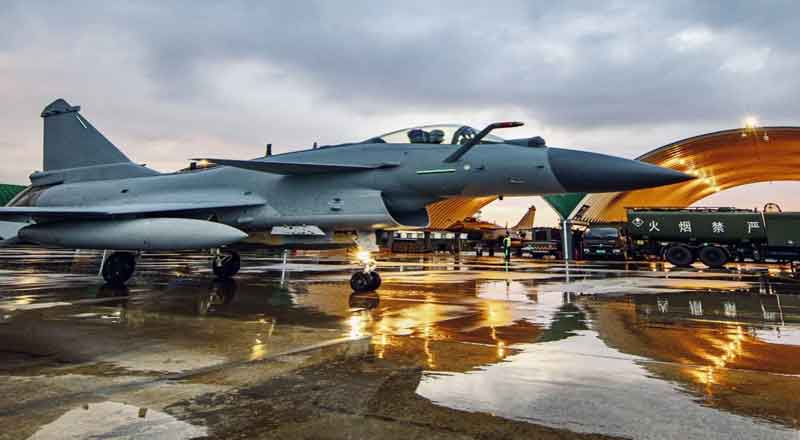In a significant development with far-reaching implications for regional security dynamics, China has deployed its most advanced J-20 “Mighty Dragon” fifth-generation fighter jets near India’s Sikkim border. Satellite imagery released by All Sources Analysis revealed the presence of six Chinese Air Force J-20 stealth fighter jets at a military civilian airport in Tibet’s Shigatse, located a mere 150 kilometres away from the Line of Actual Control (LAC).
Against the backdrop of ongoing geopolitical tensions and territorial disputes in the Indo-Pacific region, China’s strategic move to position J-20 fighters near the Sikkim border underscores its assertive posture and ambitions for regional dominance. As India grapples with evolving security challenges along its northern frontier, the deployment of advanced military assets such as the J-20 presents a formidable challenge, necessitating a comprehensive assessment of its implications and strategic response.
Satellite Imagery Reveals Deployment:
The revelation of the presence of J-20 stealth fighter jets near the Sikkim border marks a significant escalation in China’s military posture in the region. The deployment of these advanced aircraft, capable of conducting stealth operations and engaging targets with precision, raises concerns about China’s intentions and strategic objectives along the disputed border.
Chinese Intentions Suspected:
While Beijing has yet to officially comment on the deployment of J-20 fighters near the Indian border, analysts speculate about China’s intentions to alter the status quo in the eastern sectors of Arunachal Pradesh and Sikkim, mirroring its assertive actions in other disputed areas such as eastern Ladakh. The proximity of the J-20 fighters to the LAC amplifies apprehensions about potential provocations or military incursions by China.
Indian Response and Concerns:
The Indian defense establishment remains vigilant in light of China’s military build-up along the border, particularly in the Tawang sector of Arunachal Pradesh. While the Indian Air Force (IAF) has refrained from commenting on the recent imagery, defense officials acknowledge the heightened threat posed by the deployment of J-20 fighters. India’s defense preparedness and strategic response mechanisms are being reassessed to effectively counter emerging security challenges.
Analysis of China’s J-20 Fighters:
The Chengdu J-20, hailed as China’s most advanced operational fighter aircraft, represents a significant leap in the country’s military capabilities. Equipped with state-of-the-art stealth technology and advanced weaponry, including long-range air-to-air missiles, the J-20 poses a formidable challenge to regional security. China’s strategic deployment of these aircraft near the Indian border underscores its commitment to enhancing its military capabilities and asserting dominance in the Indo-Pacific region.
India’s Response and Countermeasures:
India’s response to the deployment of J-20 fighters revolves around bolstering its defense capabilities and strategic partnerships to effectively counter emerging threats. With the induction of French-built Rafale fighter jets and ongoing military exercises with partner countries, India seeks to enhance its deterrence posture and safeguard its territorial integrity. The strategic positioning of China’s J-20s near India’s Rafale base in West Bengal’s Hasimara underscores the strategic significance of the region in the evolving security landscape.
As geopolitical rivalries intensify and security dynamics evolve in the Indo-Pacific region, China’s deployment of J-20 stealth fighter jets near the Sikkim border underscores the imperative for India to remain vigilant and proactive in safeguarding its national interests. The strategic maneuvering by China necessitates a comprehensive reassessment of India’s defense strategy and engagement with regional and international stakeholders to mitigate the risk of conflict escalation and preserve peace and stability in the region.
(With inputs from agencies)





